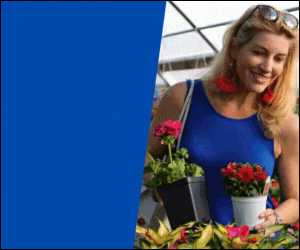
With rising costs and continuing labor shortages, efficiency and resource utilization have become even more imperative. While the Lean principles were born from manufacturing practices, their basic tenets can be applied to the nursery industry to increase efficiency and profitability while decreasing waste. Womack and Jones defined the five principles of Lean manufacturing in their book, “The Machine that Changed the World.” Their recipe for improving workplace efficiency is: 1) Defining Value; 2) Mapping the Value Stream; 3) Creating Flow; 4) Using a Pull System and 5) Pursuing Perfection.
These five steps can be simplified: Purpose, Process, People. The end goal of Lean practices is to reduce waste and, when applied to the nursery industry, can include inefficient labor hours, plant losses, wasted water, etc. Reducing waste by focusing on purpose, process, and people will increase profits and make your company more sustainable.
Purpose
The purpose of any nursery is to cost effectively sell a healthy plant product within a given season. That means water must be a key input. Utilizing this valuable resource to its maximum potential will decrease losses, increase sales, reduce labor costs, and result in better plant health. It is important to know your plants and nursery layout to determine the best product placement. Placing plants with different water requirements within the same sprinkler zone will result in plant health issues. Overall exposure and environment also play a role in water usage. Shade houses require less water and improve overall plant health, decrease plant stress, reduce losses and extend shelf life. Another way to utilize water more efficiently is to water in the morning before the heat of the day negatively affects your product, or before daily operations and sales are interrupted by watering cycles.
Space is another important factor that is often overlooked when planning for a Lean operation. It is important to consider square footage turnover. What product makes the most sense to tie up your valuable square footage, and how many times can you sell that square footage each season? What are the holding costs associated with each product? Consider labor, water, fertilizer, loss potential, and opportunity cost when purchasing or growing product.
Process
Once your purpose is established, it is important to identify the process needed to reach that goal. This will help you identify bottlenecks and determine where waste may be eliminated. A major limiting factor in the nursery industry is the transport of plant material. Whether it be shipping plants, transporting plants to/from the dock, or moving from potting to layover beds; the transportation of plants is a major time and labor draw.
Use trailers, conveyors, and tractors to do as much of the manual labor as possible. Limiting footsteps and plant touches is the simplest way to make your staff more efficient. As the transport distance increases, the number of plants moved at once must also increase. Keep processes concise and close. Having standardized systems will also keep your process simplified. Have standard trailer sizes, table sizes, rack sizes, etc., so the same number of plants always fits. This will reduce counting errors and help staff plan space and trailer usage. Having standardized layouts will also help eliminate input waste. Group together container sizes and plant types to save on management of those crops (including water and fertilizer needs or pruning schedules) and streamline the pulling of those plants.
The more you can reduce waiting time, time spent rotating jobs, movement in between steps, and time spent returning to the work area, the more efficient and less fatigued your crew will be. Take an in-depth look at your operation to consider, “What can be automated to work while my staff works?” Utilizing technology and automation will reduce labor costs and result in a more uniform product.
People
People are the last factor in the Lean process. Labor is a major limiting factor for many nurseries. While hiring more employees may not be possible for many nurseries, it is important to help your staff be as efficient as possible. Empower your staff to take ownership and pride in their work. Enabling your staff to be efficient will bolster their confidence and increase production.
Proper training and communication will also help make your staff more productive. Investing time to properly train your staff will help mitigate costly mistakes and ensure you have the right person for the task. Rotating jobs may also help minimize fatigue and strain on employees.
Allow your employees to get creative with their solutions. Sometimes the most cost-effective way to streamline a workflow is to talk to the people who do the work every day. They are the ones most likely to see the bottlenecks and have practical solutions that will increase workflows and margins.
By examining your company and the Purpose, Process, and People associated with each value-added step, waste can be reduced and your company will be more profitable.
Source: Lean Enterprise Institute, “The Lean Way” by Doanh Do








